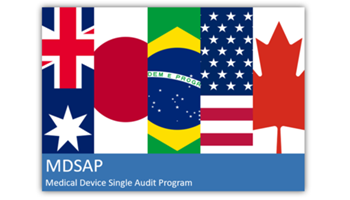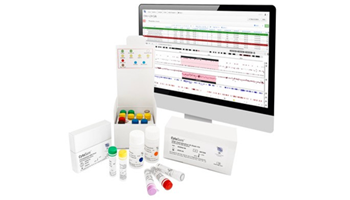Oxford, UK – 22 July 2020. In a recent, prominent, npj Genomic Medicine paper, Oxford Gene Technology’s (OGT - A Sysmex Group Company) CytoSure® Constitutional v3 array design has been shown to significantly improve reporting rate and been proven as a powerful tool for detection of small pathogenic intragenic deletions and duplications in developmental disorder (DD) research. The paper, titled ‘Exon-focused targeted oligonucleotide microarray design increases detection of clinically relevant variants across multiple NHS genomic centres’ was led by a consortium of NHS genomic medicine centres in the UK and compared the enhanced exon-level gene coverage of the v3 array to a conventional array design.
The study consisted of a large cohort of 27,756 patient samples. These were investigated with either OGT’s exon targeted CytoSure Constitutional v3 array, based on up-to-date content from the Deciphering Developmental Disorders (DDD) study and ClinGen (Clinical Genome Resource), or a conventional array design based on content from the ISCA (International Standards for Cytogenomic Arrays) consortium with a large number of backbone probes and gene coverage based on an earlier version DD/ID databases.
The results demonstrated that the v3 array had a significant increase in reporting rate of 4.49%, confirming that the enhanced, targeted exon-level coverage design enables more reportable copy number variations (CNVs) to be identified than with traditional arrays. The authors of the paper believe the findings of the research will help to enable clinical researchers to assess optimal testing pathways when integrating genomics into labs. They also note that targeted arrays offer robust CNV detection and provide a stable, proven platform with both simple data analysis and minimal demands on bioinformatics.
Lead author Jana Jezkova from the All Wales Medical Genomics Service, Cardiff and Vale University Health Board, Cardiff noted “In this paper, we evaluated the performance of a targeted oligonucleotide array CGH with enhanced exon-level coverage of genes associated with developmental disorders (CytoSure Constitutional v3). The study was conducted across multiple genomic medicine centers in a state-funded routine National Health Service (NHS) setting. Our results show that this array design leads to a significant improvement in reporting rate and provides a powerful tool for detection of small pathogenic intragenic deletions and duplications in the clinical setting. Although next generation sequencing is increasingly being used to simultaneously identify copy number changes along with single nucleotide variants, at this time, targeted arrays offer a robust method of copy number detection and offer a stable, proven platform with simple data analysis and minimal demands on bioinformatics capacity. Given the drive towards national genomic-medicine initiatives to provide consistent and equitable care for patients, we believe that the findings presented in our paper will appeal to publicly funded laboratories as well as genetics teams and referring clinicians. Our findings will allow the readers to assess optimal analysis pathways when integrating genomics into healthcare.”
OGT’s CytoSure Constitutional v3 arrays feature the most up-to-date and relevant ID/DD content with probes for up to 502 highly-targeted genes identified by ClinGen and the DDD project—enabling detection of single exon aberrations. OGT’s array design delivers high probe density across the exons and introns of important genes that enables improved detection of small (<500bp) deletions and duplications that may otherwise be missed or require manual calling on other older array designs.
Emma Shipstone, Executive VP Marketing, commented “We’re delighted with this publication as it validates what we’ve always known about the performance of our CytoSure Constitutional v3 array and the quality of the data—it’s great to see that crystallized in this research. OGT is renowned for our unparalleled design capabilities and our commitment to the constitutional cytogenetics space—our arrays are widely trusted and regarded as the best on the market. It’s wonderful to see this research confirm our superior design compared to more conventional arrays and that this importantly enables scientists to identify more relevant aberrations underlying developmental delay. This design concept is something that we have translated in to our recently launched CytoSure NGS assay, which, as Jana notes, provides users the ability to assess the appropriate analytical pathway for their laboratory.”
The npj Genomic Medicine paper can be accessed at: https://rdcu.be/b5KWZ.
About OGT
OGT, a Sysmex Group company, is a leading global provider of clinical and diagnostic genomic solutions that are created for scientists by scientists - including CytoCell®, CytoSure® and SureSeq™ ranges of FISH, microarray and NGS products. The company is dedicated to creating products that enable researchers and clinical decision makers to reach the right care decisions for each patient, every time. OGT strives to unlock the future of genetic clinical care with a commitment to working in partnership with its customers - not only by sharing its expertise of 25 years at the forefront of genetic endeavour, but also by working closely with scientists to understand their unique challenges, and to customise its approach to meet their exact needs. Dedicated to improving clinical care, OGT believes that through partnership—together—we’ll achieve more.
For more information on the Company, please visit our website at ogt.com
CytoSure®, SureSeq™ and myProbes®: For Research Use Only, not for use in diagnostic procedures. CytoCell: Some products may not be available in your region.
About Sysmex Corporation
Sysmex Corporation is a world leader in clinical laboratory systemization and solutions, including laboratory diagnostics, laboratory automation and clinical information systems. Serving customers for more than 50 years, Sysmex focuses on technological leadership in diagnostic science and information tools that make a difference in the health of people worldwide. The company is also exploring emerging opportunities in the life science field. Its R&D efforts focus on the development of high-value-added testing and diagnostic technologies that are innovative, original and optimize individual health. Sysmex also seeks to leverage its state-of-the-art technologies for cell, gene and protein analysis. The company, headquartered in Kobe, Japan, has subsidiaries in North America, Latin America, Europe, the Middle East, Africa, China and Asia Pacific and employs more than 9,000 employees worldwide. Sysmex Corporation is listed in the top tier of the Tokyo Stock Exchange.
For more information about Sysmex Corporation and its affiliate companies, please visit www.sysmex.co.jp/en/.

MDSAP certification of new Cambridge facility smooths path to future IVD approvals.
Read
CytoSure® NGS – Combining the benefits of microarrays and NGS in a single assay.
Read
Robust panel enables accurate and comprehensive constitutional genetic aberration screening in one assay.
Read